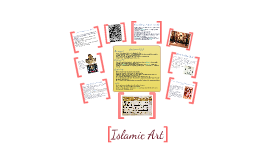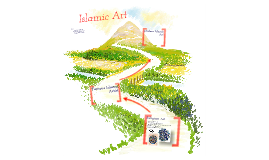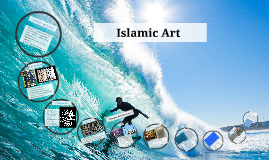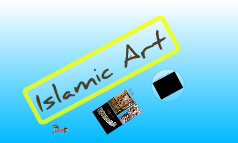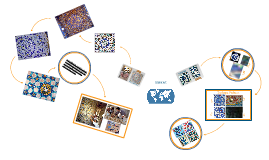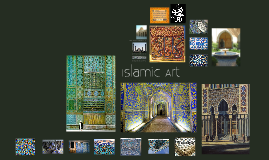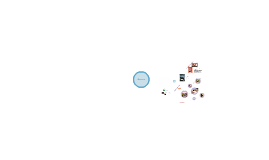Islamic Art
Transcript: Islamic Art Presentation By: Jennifer Agyapong, Becky Saunders, Miguel Samano Context Islam is an Abrahamic religion centered around the revelations of the Arabic prophet Muhammad His revelations are written down in the Qauran, the Muslim holy book Islam became widespread during the reign of the first four caliphs and afterwards during the Islamic Golden Age The Islamic world was highly eclectic and tended to incorporate ideas from other cultures into its art Islamic artg; was geometric, highly stylized,botanically influenced, and aniconic Art was often decorated with Arabic calligraphy in the nakshi script, for aestheic effect, and in the Kufic script for clarity Worship was done in a mosque and prayer was always toward Mecca To guide worshippers, mosques had a mihrab in the wall that was closest to Mecca Madrasas were built for religious and legal studies The Islamic realm stretched from Spain to India at its peak The Islamic world fostered the growth of intellectualism and preserved Classical writings A schism took place in Islam that divided Islam into two sects based on thought rgarding the caliphate: Sunni and Shi'ite Islamic Works of Art Dome Of the Rock Date: 691- 2 Location: Jerusalem Patron: Abd Al- Malik Context: This work of architecture is the 1st great monument of Islamic Art and the 3rd most holy site in Silam. In the center the Haram al- Sharif is found, which is and ourcrop from where Muslims believe Muhammad ascended to the prescence of God on the “Night Journey”. I: Sryians trained in Byzantine tradition were hired to work on Dome of the Rock. In turn it structurally imitates early Christian and Byzantine chuches. Parts: Ornate golden dome on octagonal drum, arcades, alternating piers & columns, ambulatories. Oldest surviving written texts of the Qur’an as well as passages create a frieze in the inner walls Wall-tile from Kashan Date: c. 1270- 75 Patron: Abahka Location: Takht-i Sulayman, Kashan (Iran) Materials: Fritware, molded and painted in colors and luster Context: The ceramic tile is in the shape of an eight pointed star with depiction of a Chinese dragon. It is sculpted in low relief against a gold- brown lustre with beautiful coloring. The palace Takht- I Sulayman is known for its tiles being done in rich luster technique Vocab: Lusterware- ceramic work using a thin, transparent glaze with a metallic sheen, was applied over the colored glazes. Resulted in resembling precious metal Fritware- one part white clay, 10 parts quarts, and one part quartz fused with soda, producing a brittle white ware. A substitute for Chinese porcelain Court of the Lions Date: 1354- 91 Location: Granada, Spain Context: Court of the Lions is an enclosed garden located in Sultan Muhammad V’s Palace of the Lions. This Palace was located in a sophisticated citadel called Alhambra. Alhambra was a place for the last Spanish Muslim Dynasty, the Nasrids. Parts: It was split into four parts by cross axial walkways that meet at a central marble fountain. 12 lions are sculpted holding up the fountain. Courtyard is surrounded by an arcade of stucco arches supported by columns. Second floor miradors overlook the courtyard which is most likely for the women to watch the activities since they were not allowed to appear in public. Page from the Qur’an Date: 9th century Location: Syria Material: black ink pigments, and gold on vellum Context: It is (Surah II: 286 and title Surah III) in Kufic script. Muslim society put calligraphy on a pedestal as well the calligraphers who hold the highest status of artists in Islamic society. Arabic script is written from right to left and Kufic script (after Kufa, a city in Iraq) is blocky, angular, with strong upright and horizontal strokes. May have first been developed for carved inscriptions for clarity. Usually on 3 to 5 lines a page also for clarity since a book would usually be shared by more than one person Date: 1215-16 Material: Glazed painted fritware, incised Location: Iran Context: The Macy Jug ,named after a previous owner, double shell fritware is a beautiful example of lusterware. It has an inner solid body beneath that is painted black representing animals and sphinxes set in a “water weed” pattern. As well as a densely decorated and perforated outer shell with a turquoise glaze and deep cobalt in the flower decor Dome in Front of the Mihrab Date: 965 Patron: Abd al – Rahman III and al- Hakman II Location: Cordoba, Spain Context: The Great Mosque of Cordoba where the dome is located was built by the Umayyad Dynasty who fled North Africa into Spain. The site was originally for a Christian church which is practical yet symbolic as an affirmation of their presence. The Dome in Front of the Mihrab is a melon- shaped ribbed dome added years as a renovation of the Great Mosque. It conveys Islamic interest in geometry and mathematics with its incredibly patterned overlay. Stylized vegetation is seen as well as calligraphy. I: The renovation was installed by a Byzantine






